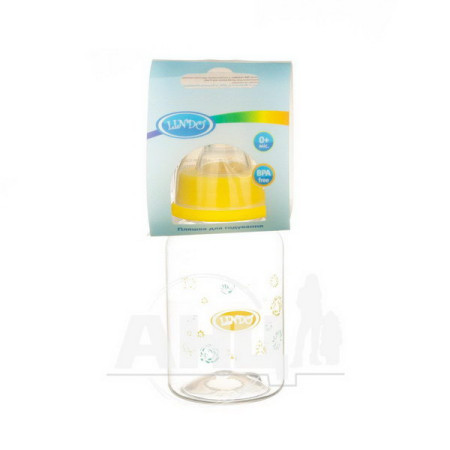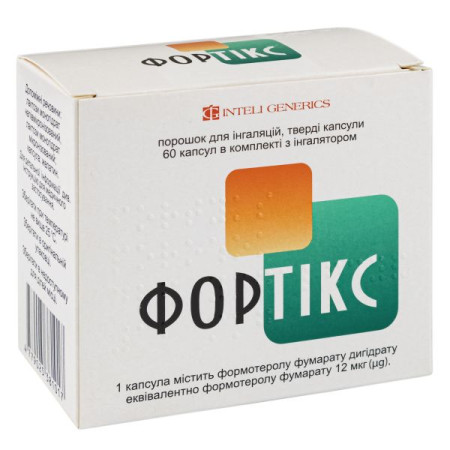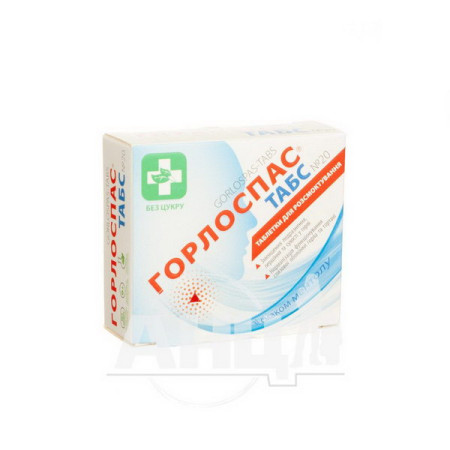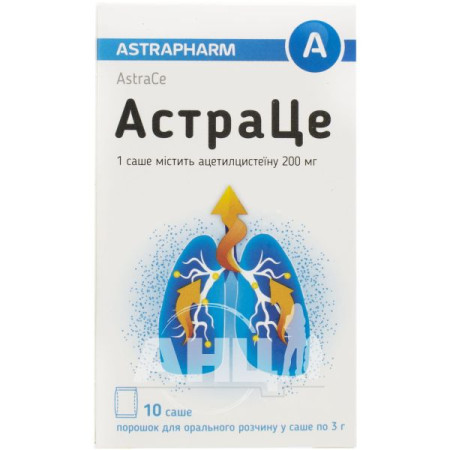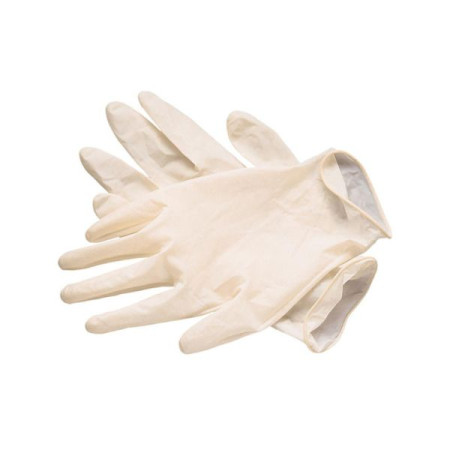Montelukast-Teva film-coated tablets 10 mg No. 28

Instructions for Montelukast-Teva film-coated tablets 10 mg No. 28
Composition
active ingredient: montelukast;
1 film-coated tablet contains 10 mg of montelukast (as montelukast sodium);
Excipients: lactose monohydrate; hydroxypropylcellulose; pregelatinized corn starch; sodium starch glycolate (type A); magnesium stearate; sodium lauryl sulfate;
Opadry 20A23676 Yellow shell: hydroxypropylcellulose, hypromellose, titanium dioxide (E 171), yellow iron dioxide (E 172), red iron oxide (E 172).
Dosage form
Film-coated tablets.
Main physicochemical properties: beige, round, film-coated tablet, embossed with “93” on one side and “7426” on the other side of the tablet, without visible cracks or chips.
Pharmacotherapeutic group
Means for systemic use in obstructive airway diseases. Leukotriene receptor blockers. ATC code R03D C03.
Pharmacological properties
Pharmacodynamics.
Cysteinyl leukotrienes (LTC4, LTD4, LTE4) are potent inflammatory eicosanoids secreted by a variety of cells, including mast cells and eosinophils. These important pro-asthmatic mediators bind to cysteinyl leukotriene receptors (CysLT). The CysLT type 1 receptor (CysLT1) is found in the human airways (particularly on airway smooth muscle cells and airway macrophages) as well as on other pro-inflammatory cells (including eosinophils and certain myeloid stem cells). The presence of CysLT receptors correlates with the pathophysiology of asthma and allergic rhinitis. In asthma, leukotriene-mediated effects include bronchoconstriction, mucus secretion, vascular permeability, and eosinophilia. In allergic rhinitis, CysLT protein is released from the nasal mucosa after allergen exposure in both early and late-type reactions, and this is accompanied by symptoms of allergic rhinitis. According to studies, intranasal administration of CysLT resulted in increased nasal airway resistance and increased symptoms of nasal congestion.
Montelukast is an orally administered active compound that binds with high selectivity and affinity to CysLT1 receptors. In clinical studies, montelukast has been shown to inhibit bronchospasm following inhalation of 5 mg LTD4. Bronchodilation was observed within 2 hours of oral administration, and this effect was additive to that produced by β-agonists. Treatment with montelukast inhibited both the early and late phases of antigen-induced bronchoconstriction. Montelukast reduces peripheral blood eosinophil counts in adult and pediatric patients compared with placebo. In a separate study, montelukast significantly reduced airway (sputum) and peripheral blood eosinophil counts and improved clinical control of asthma.
In studies in adults, montelukast 10 mg once daily demonstrated significant improvements compared with placebo in morning FEV1 (change from baseline of 10.4% and 2.7%, respectively), morning peak expiratory flow rate (PEFV) (change from baseline of 24.5 L/min and 3.3 L/min, respectively), and a significant reduction in total β-agonist use (change from baseline of -26.1% and -4.6%, respectively). Improvements in patient-reported daytime and night-time asthma symptoms were significantly greater than placebo.
A clinical trial was conducted to evaluate montelukast as a symptomatic treatment for seasonal allergic rhinitis in patients 15 years of age and older with asthma and comorbid seasonal allergic rhinitis. This trial demonstrated that montelukast tablets, when administered at a dose of 10 mg once daily, demonstrated statistically significant improvements in the average daily rhinitis symptom score compared to placebo. The average daily rhinitis symptom score is the average of daytime nasal symptoms (average nasal congestion, rhinorrhea, sneezing, nasal itching) and nighttime nasal symptoms (average nasal congestion upon awakening, difficulty falling asleep, and number of nighttime awakenings). Compared with placebo, patients and physicians reported significantly better overall ratings of allergic rhinitis treatment. The efficacy of this treatment in asthma was not the primary objective of this study.
In an 8-week study in children aged 6 to 14 years, montelukast 5 mg once daily compared with placebo significantly improved respiratory function (change from baseline in FEV1: 8.71% vs. 4.16%, change in morning PSV: 27.9 L/min vs. 17.8 L/min) and reduced the frequency of β-agonist use when needed (change from baseline by -11.7% vs. +8.2%).
A significant reduction in exercise-induced bronchoconstriction (EIB) was demonstrated in a 12-week study in adults (peak FEV1 decrease 22.33% with montelukast versus 32.40% with placebo; time to recovery to within 5% of baseline FEV1 44.22 min versus 60.64 min). This effect was observed throughout the 12-week study period. A reduction in EIB was also demonstrated in a short-term study in children aged 6 to 14 years (peak FEV1 decrease 18.27% versus 26.11%; time to recovery to within 5% of baseline FEV1 17.76 min versus 27.98 min). The effect in both studies was demonstrated at the end of treatment with once-daily dosing.
In aspirin-sensitive patients receiving current inhaled and/or oral corticosteroid therapy, treatment with montelukast compared with placebo significantly improved asthma control (change from baseline in FEV1 8.55% vs. -1.74% and change from baseline in reduction in total β-agonist use -27.78% vs. 2.09%).
Pharmacokinetics.
Absorption. Montelukast is rapidly absorbed after oral administration. After administration of 10 mg film-coated tablets to adults in the fasted state, the mean maximum plasma concentration (Cmax) was reached after 3 hours (Tmax). The mean oral bioavailability is 64%. Oral bioavailability and Cmax were not affected by normal food intake. Safety and efficacy have been demonstrated in clinical studies with 10 mg film-coated tablets administered without regard to mealtime.
For the 5 mg chewable tablet, Cmax in adults was achieved 2 hours after administration in the fasted state. The mean oral bioavailability is 73% and decreases to 63% when taken with a standard meal.
Distribution: Montelukast is more than 99% bound to plasma proteins. The steady-state volume of distribution of montelukast averages 8 to 11 liters. In animal studies, the passage of radiolabeled montelukast across the blood-brain barrier was minimal. In all other tissues, concentrations of radiolabeled material were also minimal 24 hours after administration.
Metabolism: Montelukast is extensively metabolized. Steady-state plasma concentrations of montelukast metabolites have not been determined in studies using therapeutic doses in adults and pediatric patients.
Cytochrome P450 2C8 is the major enzyme in the metabolism of montelukast. In addition, cytochromes CYP 3A4 and 2C9 play a minor role in the metabolism of montelukast, although itraconazole (a CYP 3A4 inhibitor) did not alter the pharmacokinetics of montelukast in healthy volunteers given 10 mg of montelukast daily. In vitro studies using human liver microsomes have shown that therapeutic plasma concentrations of montelukast do not inhibit cytochromes P450 3A4, 2C9, 1A2, 2A6, 2C19, and 2D6. The contribution of metabolites to the therapeutic effects of montelukast is minimal.
Elimination: The plasma clearance of montelukast in healthy adult volunteers averages 45 mL/min. Following oral administration of radiolabeled montelukast, 86% is excreted in the feces within 5 days and less than 0.2% in the urine. This, together with the oral bioavailability of montelukast, indicates that montelukast and its metabolites are almost entirely excreted in the bile.
A decrease in plasma theophylline concentrations has been observed at high doses of montelukast (20 and 60 times the recommended adult dose). This effect is not observed at the recommended dose of 10 mg once daily.
Indication
Add-on treatment of bronchial asthma in patients with mild to moderate persistent asthma inadequately controlled with inhaled corticosteroids, and when asthma is not adequately controlled with short-acting β-adrenergic agonists used as needed. In patients with asthma taking Montelukast, this medicine also relieves symptoms of seasonal allergic rhinitis.
Prevention of asthma, the dominant component of which is exercise-induced bronchospasm.
Relief of symptoms of seasonal and perennial allergic rhinitis. The risks of psychoneurological symptoms in patients with allergic rhinitis may outweigh the benefits of Montelukast, and Montelukast should be used as a reserve drug in patients with inadequate response to or intolerance to alternative therapies.
Contraindication
Hypersensitivity to montelukast or to any component of the drug.
Children under 15 years of age (for a dose of 10 mg).
Interaction with other medicinal products and other types of interactions
Montelukast may be administered with other medicinal products commonly used for the prophylaxis or long-term treatment of asthma. In drug interaction studies, the recommended dose of montelukast had no clinically significant effect on the pharmacokinetics of the following medicinal products: theophylline, prednisone, prednisolone, oral contraceptives (ethinylestradiol/norethindrone 35/1), terfenadine, digoxin, and warfarin.
In patients receiving concomitant phenobarbital, the area under the concentration-time curve (AUC) for montelukast was decreased by approximately 40%. Since montelukast is metabolized by CYP3A4, 2C8, and 2C9, caution should be exercised, especially in children, when montelukast is coadministered with inducers of CYP3A4, 2C8, and 2C9, such as phenytoin, phenobarbital, and rifampicin.
In vitro studies have shown that montelukast is a potent inhibitor of CYP 2C8. However, data from a clinical drug interaction study involving montelukast and rosiglitazone (a drug metabolized by CYP 2C8) have shown that montelukast is not an inhibitor of CYP 2C8 in vivo. Therefore, montelukast does not significantly affect the metabolism of drugs metabolized by this enzyme (e.g., paclitaxel, rosiglitazone, and repaglinide).
In vitro studies have shown that montelukast is a substrate of CYP 2C8 and, to a lesser extent, 2C9 and 3A4. In a clinical drug interaction study, gemfibrozil (an inhibitor of CYP 2C8 and 2C9) increased the systemic exposure of montelukast by 4.4-fold. No dose adjustment of montelukast is required when used concomitantly with gemfibrozil or other potent inhibitors of CYP 2C8, but the physician should be aware of the increased risk of adverse reactions.
Based on in vitro studies, no clinically significant interactions are expected with less potent CYP 2C8 inhibitors (e.g. trimethoprim). Co-administration of montelukast with itraconazole, a potent CYP 3A4 inhibitor, did not result in a significant increase in systemic exposure to montelukast.
Application features
Patients should be advised that oral Montelukast should never be used to treat acute asthma attacks and that they should always carry appropriate rescue medication with them. In the event of an acute attack, a short-acting inhaled β-agonist should be used. Patients should consult their doctor as soon as possible if they require more inhalations of short-acting β-agonists than usual.
Montelukast should not be abruptly substituted for inhaled or oral corticosteroids.
There are no data to support the possibility of reducing the dose of oral corticosteroids when co-administered with montelukast.
In isolated cases, patients receiving anti-asthma drugs, including montelukast, may experience systemic eosinophilia, sometimes with clinical manifestations of vasculitis, the so-called Churg-Strauss syndrome, which is treated with systemic corticosteroids. Such cases have usually (but not always) been associated with a reduction in the dose or withdrawal of corticosteroid therapy. The possibility that leukotriene receptor antagonists may be associated with the development of Churg-Strauss syndrome cannot be ruled out or confirmed, so physicians should be vigilant for the development of eosinophilia, vasculitic rash, worsening pulmonary symptoms, cardiac complications, and/or neuropathy in patients. Patients who develop such symptoms should be re-evaluated and their treatment regimen reviewed.
Montelukast treatment prevents patients with aspirin-dependent asthma from using aspirin or other nonsteroidal anti-inflammatory drugs.
| Neuropsychiatric reactions, such as behavioral changes, depression, and suicidality, have been reported in patients of all ages treated with montelukast (see Adverse Reactions). Symptoms may be severe and may persist if treatment is not discontinued. Therefore, montelukast should be discontinued if neuropsychiatric symptoms occur. Patients and/or their caregivers should be alert to neuropsychiatric reactions and should report any such behavioral changes to their physician. |
Excipients.
Lactose: Patients with rare hereditary problems of galactose intolerance, the Lapp lactase deficiency or glucose-galactose malabsorption should not take this medicine.
Sodium: This medicinal product contains less than 1 mmol sodium (23 mg) per tablet, i.e. essentially ‘sodium-free’.
Use during pregnancy or breastfeeding
Pregnancy: Animal studies have not shown harmful effects on pregnancy or embryonal/fetal development.
Published data from prospective and retrospective cohort studies of montelukast in pregnant women evaluating major birth defects in offspring do not suggest a drug-related risk. However, these studies have methodological limitations, including small sample sizes, retrospective data collection in some cases, and inconsistent comparison groups.
Montelukast-Teva should be used during pregnancy only if clearly needed.
Breastfeeding. Animal studies have shown that montelukast is excreted in human milk. It is not known whether montelukast is excreted in human milk. Therefore, Montelukast should be used during breast-feeding only if considered clearly necessary.
Ability to influence reaction speed when driving vehicles or other mechanisms
Montelukast is not expected to affect the ability to drive or use machines, however, dizziness or drowsiness have been reported very rarely.
Method of administration and doses
The recommended dose for patients (aged 15 years and over) with asthma or asthma and concomitant seasonal allergic rhinitis is 10 mg (1 tablet) per day, taken in the evening. The time of administration is selected individually to relieve the symptoms of allergic rhinitis.
General recommendations
The therapeutic effect of Montelukast-Teva on asthma control is observed within 1 day. Montelukast-Teva can be used regardless of food intake. Patients are advised to continue taking Montelukast-Teva even if their asthma is under control, as well as during an exacerbation. Montelukast-Teva should not be used simultaneously with drugs that contain the same active substance - montelukast.
Special patient groups. No dose adjustment is necessary for elderly patients or patients with renal impairment, or mild to moderate hepatic impairment. There are no data on the use of the drug in patients with severe hepatic impairment. The dosage for men and women is the same.
Use of Montelukast-Teva depending on other asthma treatments
Montelukast can be added to an existing asthma treatment regimen.
Inhaled corticosteroids: Montelukast may be used as add-on therapy in patients who are not adequately controlled on inhaled corticosteroids and short-acting β-agonists as needed. Montelukast should not be abruptly substituted for inhaled corticosteroids (see section 4.4).
Children.
Used in children over 15 years of age. Children under 15 years of age should use the medicine in the form of chewable tablets.
Overdose
There is no specific information on the treatment of overdose with montelukast. In chronic asthma studies, montelukast has been administered at doses up to 200 mg/day to adult patients for 22 weeks, and in short-term studies, up to 900 mg/day for approximately one week, without clinically significant adverse reactions.
Cases of acute overdose of montelukast have occurred in post-marketing use and during clinical trials. Doses exceeding 1000 mg have been reported in adults and children (including a case of approximately 61 mg/kg in a 42-month-old child). The clinical and laboratory data obtained were consistent with the safety profile for adult and pediatric patients. In most cases of overdose, no adverse reactions were reported. The most commonly observed adverse reactions were consistent with the safety profile of the drug and included abdominal pain, drowsiness, thirst, headache, vomiting, and psychomotor hyperactivity.
It is not known whether montelukast is removed by peritoneal dialysis or hemodialysis.
Side effects
10 mg film-coated tablets – a study involving approximately 4,000 asthma patients aged 15 years and older;
film-coated tablets, 10 mg – a study involving approximately 400 patients with asthma and seasonal allergic rhinitis aged 15 years and older;
5 mg chewable tablets – a study involving approximately 1,750 asthma patients aged 6 to 14 years.
In clinical trials, the following adverse reactions were observed commonly (≥1/100 to <1/10) in patients treated with montelukast and at a greater frequency than in patients treated with placebo.
Table 1
| Organ systems | Adult patients, children over 15 years old (two 12-week studies; n = 795) |
| Nervous system disorders | Headache |
| Gastrointestinal disorders | Abdominal pain |
During clinical studies with long-term treatment of a limited number of adult patients (for 2 years) and children 6-14 years of age (for 12 months), the safety profile did not change.
Post-marketing period
The following adverse reactions have been reported during post-marketing experience. The frequency of adverse reactions is defined based on data from relevant clinical trials and is classified as follows: very common (≥1/10), common (≥1/100 to <1/10), uncommon (≥1/1,000 to <1/100), rare (≥1/10,000 to <1/1,000), very rare (<1/10,000).
Infections and infestations: very common – upper respiratory tract infection.
From the blood and lymphatic system: rarely - bleeding tendency; very rarely - thrombocytopenia.
Immune system disorders: uncommon – hypersensitivity reactions, including anaphylaxis; very rare – eosinophilic infiltration of the liver.
Psychiatric disorders: infrequently - sleep disorders, including nightmares, insomnia, somnambulism, anxiety, agitation, including aggressive behavior or hostility, depression, psychomotor hyperactivity (including irritability, restlessness, tremor); rarely - attention deficit disorder, memory impairment, tic; very rarely - hallucinations, disorientation, suicidal thoughts and behavior (suicidality), obsessive-compulsive symptoms, dysphemia.
Nervous system disorders: infrequently - dizziness, lethargy, paresthesia/hypoesthesia, convulsions.
Cardiac: rarely – palpitations.
On the part of the respiratory system, thoracic organs and mediastinum: infrequently - epistaxis; very rarely - Churg-Strauss syndrome (see section "Special instructions for use"), pulmonary eosinophilia.
Gastrointestinal: common: diarrhea, nausea, vomiting; uncommon: dry mouth, dyspepsia.
Hepatobiliary system: often - increased serum transaminase levels (alanine aminotransferase [ALT], aspartate aminotransferase [AST]); very rarely - hepatitis (including cholestatic, hepatocellular and mixed liver damage).
Skin and subcutaneous tissue disorders: common: rash; uncommon: hematoma, urticaria, pruritus; rare: angioedema; very rare: erythema nodosum, erythema multiforme.
Musculoskeletal and connective tissue disorders: uncommon – arthralgia, myalgia, including muscle cramps.
Renal and urinary disorders: uncommon – enuresis in children.
General disorders: common: pyrexiab; uncommon: asthenia/fatigue, malaise, edema.
a This adverse reaction was observed with a frequency of “very common” in patients treated with montelukast and in patients treated with placebo in clinical trials.
b This adverse reaction was observed with a frequency of “common” in patients treated with montelukast and in patients treated with placebo in clinical trials.
c Frequency: “rare”.
Expiration date
3 years.
Storage conditions
Does not require any special storage conditions. Keep the blister in the outer carton in order to protect from light.
Packaging
7 tablets in a blister, 4 blisters in a cardboard box.
Vacation category
According to the recipe.
Producer
Teva Operations Poland LLC.
Location of the manufacturer and address of its place of business
80 Mogilska Street, 31-546 Krakow, Poland.
There are no reviews for this product.
There are no reviews for this product, be the first to leave your review.
No questions about this product, be the first and ask your question.




